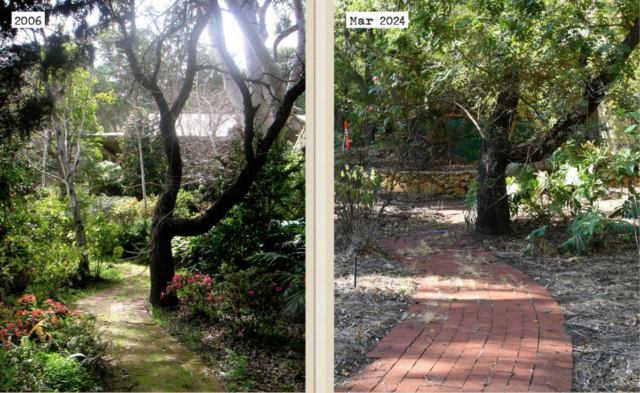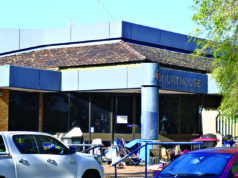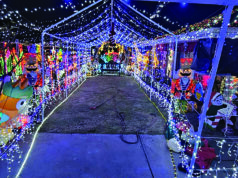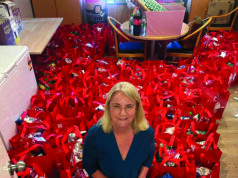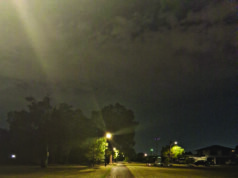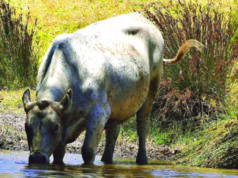On a steep slope beside a major arterial highway, a local piece of paradise is being resurrected.
The four-acre Wirra Willa garden beside Neerigen Brook is a rare residential example of a Paradise-style garden nurtured and shaped over nearly a century.
Paradise gardens served as oases throughout the Islamic empire; the lush and fragrant sanctuaries tantalised the senses, exotic species invigorated the imagination, and water features refreshed the spirit in often inhospitable climes.
Wirra Willa is a potent example of this Garden of Eden aesthetic, set on the outskirts of the Armadale CBD, in the driest state on the driest continent on Earth.
In recognition of the garden’s heritage value the property was given permanent status on the Register of the National Estate on 21 October 1980, and is one of a small number of the state’s gardens listed.
Its significance was also officially recognised in 2021 when Wirra Willa was included in the Heritage Register for State Landmarks.
Its statement of significance describes the garden as having a “canopy of mature native and exotic trees with dense areas of exotic under-planting dominated by camellias, azaleas, and magnolias, interspersed with small areas of lawn, and containing narrow, sinuous paths and driveways in a variety of materials, rock walls, a geometric rose garden, and an area of predominantly native bush characterised by Wandoo and Grass Trees”.
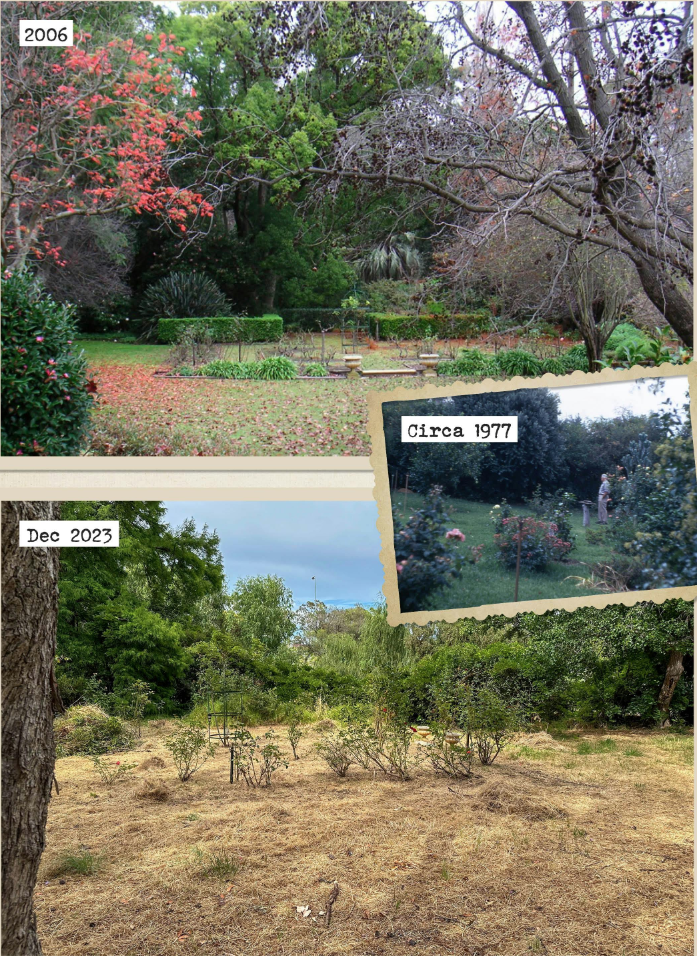
It is a ‘garden of consequence’ which showcases mature specimens of many exotic plants rarely grown in WA.
Wirra Willa planted the seeds of possibility in gardeners across the state and has served as a tool for education about the unique growth patterns and horticultural requirements of these exotic species.
It has also been a “valuable source of propagation material” for nurseries around the state.
Between the 1930s and 2006, the garden was maintained and developed as part of a private residential property by successive female, amateur horticulturalists – which in itself was significant, with previous involvement in horticulture and garden design by female enthusiasts being quite limited.
One of those stewards was Mary Hargreaves, who was also instrumental in the development of the Araluen Botanic Gardens.
She was responsible for placing a restrictive covenant on the Wirra Willa site with the National Trust of Western Australia – one of the first attempts at conserving land for future generations to come out of the emerging 1970s heritage movement.
Unfortunately, the gardens fell into a state of neglect shortly after the turn of the century. And they narrowly escaped an attempt at residential development.

So, in 2022, the City of Armadale used its financial reserves to acquire the property “to safeguard and preserve this cultural and environmental heritage site for future generations”.

Earlier this year, the city began the Herculean task of restoring the gardens to their former glory.
“We are very much in the early stages of recording the elements of the site, including its botanical uniqueness as the garden reveals different aspects as the seasons change,” Mayor Ruth Butterfield said.
“The city has carefully undertaken preliminary garden works that require a higher level of care to ensure integrity is maintained. For example, essential pruning was done by bringing in spider lifts to minimise any ground disturbance and ensure any bulbs that were under the ground were not accidentally damaged.”
With the gardens in local government hands, they will – for the first time – become a public treasure, and open for the community’s pleasure. However, despite the keen interest from local gardening enthusiasts, the city is hesitant to put a deadline on the restoration.
“As this site is such an important historical asset, it is necessary that we give the garden time to go through the cycles of the seasons, to inform our planning,” Mayor Butterfield said.
“As it is a State Heritage listed site, we must seek approval for our plans at each stage. All of this takes time, but as the garden is unique, it warrants a slow and careful approach.
“There are a number of issues that need to be addressed before we consider opening the gardens to the general public, such as the safety of current buildings, stability of pathways, as well as access and parking.
“It may be possible to arrange for small group tours before then, as we can understand the eagerness of the community to see the site as it starts to be restored.”
With each successive steward following a custom of adding their own personal flair to the garden, we asked the city if there were any plans underfoot to introduce new features to cement its own legacy.
“This will be considered as part of the master planning process. We will then be better positioned to decide about any new features that may be added,” Mayor Butterfield said.
“Whilst our focus is on restoring any special plants and trees that have been lost over time, the garden has a history of each female horticulturist owner adding to the garden, so it would be in keeping with the continued evolution of the paradise garden for the city to add new features.”


